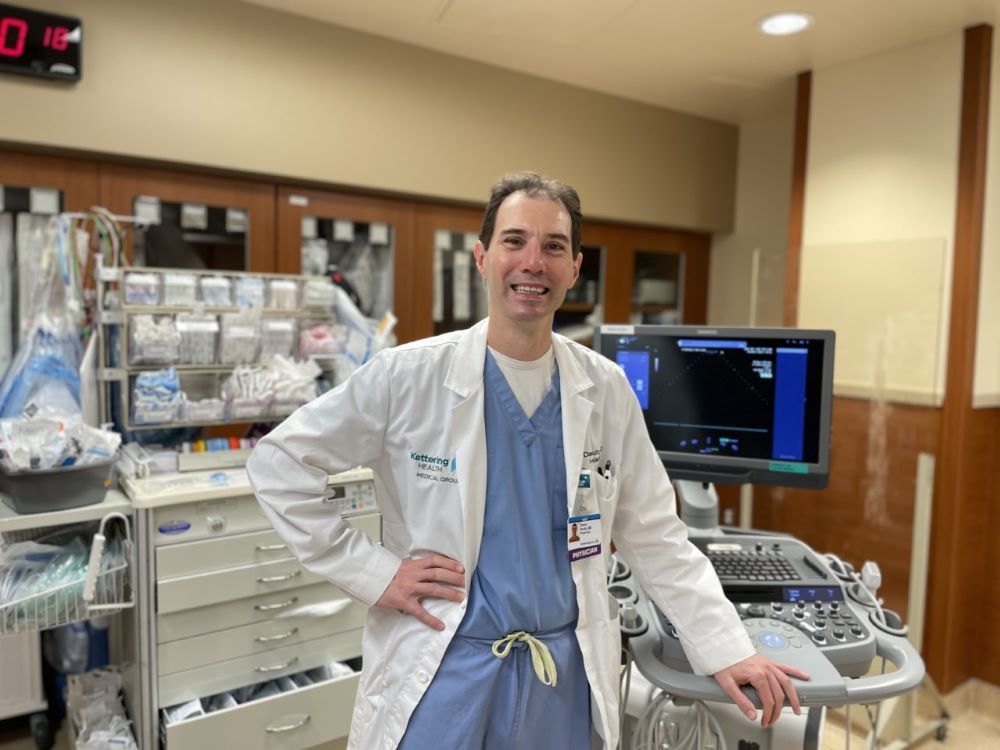Podiatry Care
Want to learn more about this at Kettering Health?
Online searches skyrocketed on January 3, 2023, for “cardiac arrest.” Earlier that morning, the Buffalo Bills announced that Safety Damar Hamlin “collapsed from cardiac arrest” during a game the night before. Nearly 24 million people watched the on-field drama unfold.
More recently, Bronny James, son of NBA star LeBron James, also experienced cardiac arrest. So, what is the difference between cardiac arrest and a heart attack?
It’s a question Dr. David Stultz, cardiologist, wants to help answer.
Heart attack is a plumbing issue
The first thing to know about cardiac arrest is that it’s not the same as a heart attack.
“We use and hear these terms to the point that we think they’re interchangeable,” Dr. Stultz says. “We use the phrase ‘heart attack’ in reference to many things.”
Heart attacks are best understood as “damage to the heart muscle,” Dr. Stultz explains. Like any muscle, the heart needs oxygenated blood to stay healthy. And when an artery leading to the heart gets blocked, it starves the heart of oxygen.
“Think of a heart attack as a plumbing issue,” Dr. Stultz says. “The pipes, essentially, get clogged.” And that clog, or blockage, essentially suffocates the heart as it tries to pump blood. The longer someone goes without clearing the blockage, the worse the damage.
During a heart attack, the body still has a pulse. That’s because the “plumbing issue” that leads to a heart attack doesn’t interfere with the heart’s electrical hardwiring, which keeps it beating. But on occasion, damaged heart tissue can cause it “to go haywire,” as Dr. Stultz described. This leads to what he called ventricular fibrillation—or cardiac arrest.
Cardiac arrest is an electrical issue
“Where heart attacks can be considered plumbing issues,” Dr. Stultz says,“ cardiac arrest is an electrical issue.”
And that electrical issue stops the body’s cardiac conduction system, seizing the heart, keeping it from pumping rhythmically with enough force to push blood throughout the body. When the heart stops pumping blood, the body shuts down.
“While patients may feel dizzy, there’s not much warning,” Dr. Stultz explains. “Chances are they’ll faint. And they won’t have a pulse.”
Within a few minutes of lost circulation, organ damage begins. More than other organs in your body, Dr. Stultz says, the brain is most vulnerable to life-threatening damage. The loss of brain cells compounds into the loss of basic bodily functions, along with higher functions like speech and motor skills.
This immediate cascade of complications is why out-of-hospital survival rates for cardiac arrest are fairly low—and why bystander CPR, along with AED (automated external defibrillator) access, is so vital to someone’s survival.
“If someone knows CPR or has access to an AED, that will be lifesaving to someone who’s gone into cardiac arrest,” Dr. Stultz emphasizes.
Always act
Despite their differences, cardiac arrest and heart attacks both deserve the same response: action.
“The most important thing to do,” Dr. Stultz warns, “is to know what symptoms to recognize and to call 911. If they faint and don’t have a pulse, it’s cardiac arrest. If they have a pulse and they’re breathing, it can be a heart attack. But act either way.”










